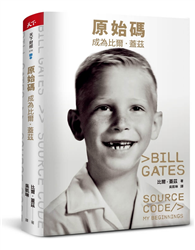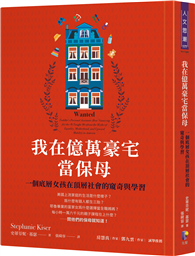| FindBook |
有 4 項符合
C HOW TO PROGRAM: WITH CASE STUDIES IN APPLICATIONS AND SYSTEMS PROGRAMMING 9/E (G-PIE)的圖書 |
| |
C HOW TO PROGRAM: WITH CASE STUDIES IN APPLICATIONS AND SYSTEMS PROGRAMMING 9/E (G-PIE) 作者:DEITEL、DEITEL 出版社:全華 出版日期:2022-08-05 |
| 圖書館借閱 |
| 國家圖書館 | 全國圖書書目資訊網 | 國立公共資訊圖書館 | 電子書服務平台 | MetaCat 跨館整合查詢 |
| 臺北市立圖書館 | 新北市立圖書館 | 基隆市公共圖書館 | 桃園市立圖書館 | 新竹縣公共圖書館 |
| 苗栗縣立圖書館 | 臺中市立圖書館 | 彰化縣公共圖書館 | 南投縣文化局 | 雲林縣公共圖書館 |
| 嘉義縣圖書館 | 臺南市立圖書館 | 高雄市立圖書館 | 屏東縣公共圖書館 | 宜蘭縣公共圖書館 |
| 花蓮縣文化局 | 臺東縣文化處 |
|
|
* A user-friendly, code-intensive introduction to C programming.
The Deitel signature live-code approach allows students to run full programs as they learn key concepts.
- UPDATED - The 9th Edition features 142 complete, working, real-world C programs. Each code example is followed with one or more sample executions.
- UPDATED - All code examples and code selections were checked using the clang-tidy static code analysis tool.
NEW - Over 350 integrated Self-Check exercises with answers help students test and validate their understanding as they read.
- Fill-in-the-blank, true/false, and discussion Self Checks focus on concepts and terminology.
- Code-based Self Checks give students a chance to try out and reinforce programming techniques.
A focus on performance issues prepares readers for professional software-development challenges and practices.
UPDATED - Students are encouraged to think like developers by familiarizing themselves with popular open-source software and tools like Docker, GitHub, and StackOverflow.
* Offers hundreds of real-world examples, exercises, and projects for hands-on practice
UPDATED More than twenty case studies in systems programming and applications programming give students fun, hands-on opportunities to use C as its intended to be used. New and enhanced case studies:
- Focus on data science including simulations with random-number generation, survey data analysis, natural language processing, and artificial intelligence (machine-learning with simple linear regression).
- Incorporate free open-source libraries and tools.
- Focus on visualization with gnuplot.
- UPDATED - Over 400 examples, exercises, and projects (EEPs) allow students to solve interesting, real-world problems working with real-world data. EEPs are drawn from an assortment of computer science, data science, and other fields to instruct and engage students.
* Covers fundamental to advanced concepts in a flexible, modular format
Rich coverage of C fundamentals emphasizes problem-solving and algorithm development to give novice programmers a solid foundation in programming principles.
Intermediate and advanced topics are included for use in higher-level courses or for further self-study.
The modular presentation covers fundamental to advanced concepts in groups of related chapters. Instructors can easily adapt the content to a variety of courses and audiences.
- NEW - A one-page, full-color Table of Contents chart on the inside front cover makes it easy to see the books modular structure and lists all of the case studies.
Up-to-date content aligns with contemporary standards, trends, operating systems, and development tools.
- UPDATED - The book adheres to the C11/C18 standards to keep pace with expanded C capabilities. Terminology throughout has been updated to reflect the most recent C standard to help students prepare for a career in programming.
- UPDATED - All program code is compatible with Windows, macOS, and Linux operating systems and has been tested using the latest versions of the Visual C++, XCode, and GNU gcc compilers.
- UPDATED - Updated content aligns to the latest ACM/IEEE computing curricula recommendations, which call for covering security, data science, ethics, privacy, and performance concepts and using real-world data throughout the curriculum.
- UPDATED - Enhanced and updated coverage of secure C programming includes additional SEI CERT C Coding Standards. All security-related issues are called out with an icon in the text.
- UPDATED - Additional exercises ask students to use the Internet to research ethics and privacy issues in computing.
- UPDATED - Performance icons identify areas in the text that discuss performance-related issues. The case study on multithreading and multicore performance has been enhanced.
- NEW - Common errors and good software engineering practices are called out with new margin icons.
- NEW- A new tutorial helps MacOS and Windows users compile and run programs using gcc in the cross-platform GNU Compiler Collection Docker container.
- UPDATED - Expanded coverage of sorting algorithms and analysis of algorithms with Big O is included in a dedicated chapter (Chapter 13).
- NEW - Appendix D presents a user-friendly overview of object-oriented programming fundamentals to help introduce students to different programming paradigms.�
Thistitle is a Pearson Global Edition. The editorial team at Pearson has workedclosely with educators around the world to include content which is especiallyrelevant to an international and diverse audience.
For courses in computerprogramming.
A user-friendly,code-intensive introduction to C programming with case studies introducing applicationsand system programming.
C How to Program is a comprehensive introduction toprogramming in C. Like other texts of the Deitels How to Program series,the books modular presentation serves as a detailed, beginner source ofinformation for college students looking to embark on a career in coding, orinstructors and software-development professionals seeking to learn how toprogram with C. The signature Deitel live-code approach presents concepts inthe context of 142 fully working programs rather than incomplete snips of code.This gives students a chance to run each program as they study it and see howtheir learning applies to real-world programming scenarios.
Current standards, contemporary practice, and hands-onlearning opportunities are integrated throughout the 9th Edition.Over 350 new, integrated Self-Check exercises with answers allow students totest their understanding of important concepts and check their code as theyread. New and enhanced case studies and exercises use real-world data and focuson the latest ACM/IEEE computing curricula recommendations, highlightingsecurity, data science, ethics, privacy, and performance concepts.
2.Intro to C Programming
3.Structured Program Development
4.Program Contro
5.Functions
6.Arrays
7.Pointers
8.Characters and Strings
9.Formatted Input/Output
10.Structures, Unions, Bit Manipulation and Enumerations
11.File Processing
12.Data Structuresinary Trees
13. Computer-Science Thinking: Sorting Algorithms and Big O
14.Preprocessor
15.Other Topics
Appendices
A. Operator Precedence Chart
B. ASCII Character Set
C. Multithreading/Multicore and other C18/C...
|











